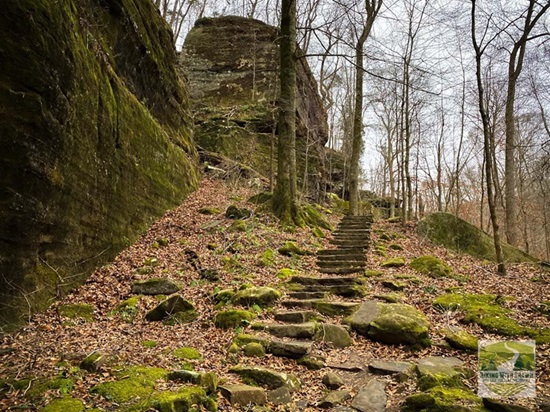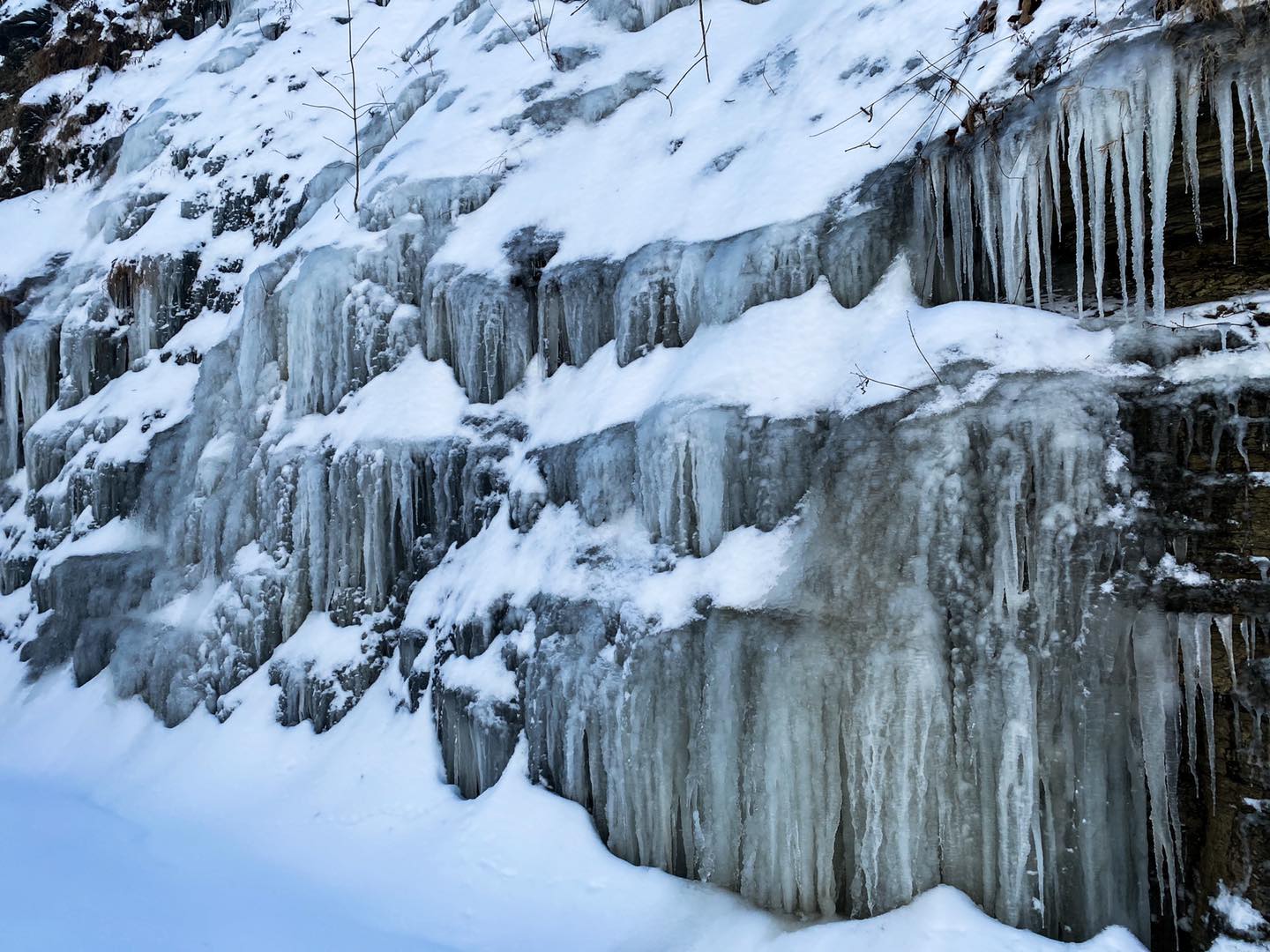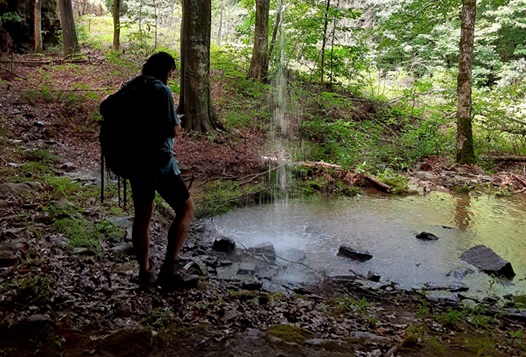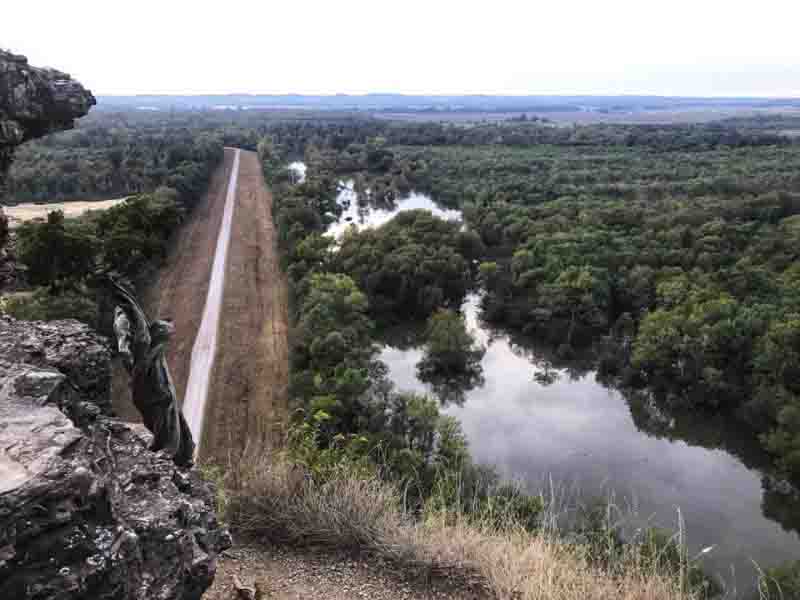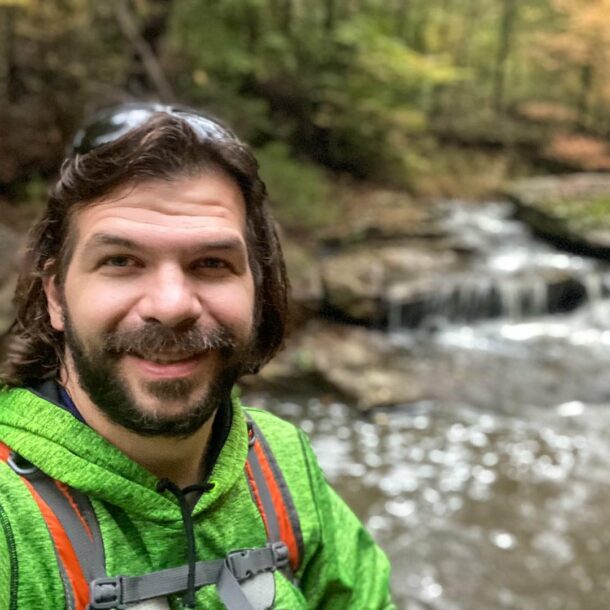What You Need to Know Before You Hike the Shawnee National Forest
There are some things you need to know before you hike the Shawnee National Forest in Southern Illinois.
The Shawnee National Forest is like any other National Forest in the United States of America. There are things to know about the hiking trails, the forest itself, and the areas where the forest is located.
In this guide, I’ll tell you everything you need to know before you hike in the Shawnee National Forest so that you can better plan your next adventure in Southern Illinois.
Quick Facts Before You Hike the Shawnee National Forest
Knowing the basic quick facts before you hike in the Shawnee National Forest can help you better prepare for your adventure.
The Shawnee National Forest is located in southern Illinois. The Shawnee Purchase Unit consists of nearly 300,000 acres of tracts in Pope, Jackson, Union, Hardin, Alexander, Saline, Gallatin, Johnson, and Massac counties.
The Shawnee National Forest is managed by the USDA Forest Service, which is headquartered in Harrisburg. There are two ranger districts: Hidden Springs Ranger District covers the eastern side of the forest and is located in Vienna, and Mississippi Bluffs Ranger District covers the western side of the forest and is located in Jonesboro.
The Forest Service in Southern Illinois consists of administrative personnel, field biologists, technicians, firefighters, and law enforcement officers.
The most popular spot in the Shawnee National Forest is Garden of the Gods, which likely sees hundreds of thousands of visitors each year (if not more). Still, it’s an area you want to see at least once or a hundred times because it’s so scenic and wild.
Other popular areas in the Shawnee include Jackson Falls, Burden Falls, Rim Rock, Bell Smith Springs, Cedar Lake, Pomona Natural Bridge, Little Grand Canyon, and Snake Road.
The longest trail system in the Shawnee National Forest is the River to River Trail, which starts at the Ohio River and goes to the Mississippi River. This trail is often called the R2R Trail for short. It is around 160 miles in length, and users thru-hike and section hike it throughout the year.
In the Shawnee National Forest, there is a trail for everyone. We have easy, short-loop trails and rugged wilderness trails. Every trail offers something amazing to see.
As of this blog post, there are no fees at any of the hiking trails in the Shawnee National Forest. However, many of the campgrounds provided by the US Forest Service do include a fee for electric and non-electric users. The fees are generally very affordable, and most nationwide passes are expected.
There are many forms of wildlife in the Shawnee National Forest. You can expect to see deer, coyote, bobcat, squirrel, beaver, otter, raccoon, opossum, armadillo, chipmunk, and skunk. There are many different birds throughout the forest, including larger species such as herons, hawks, and eagles. Snakes and other reptiles exist in the forest, including venomous snakes. While they are known to pass through from time to time, black bears and mountain lions do not have a population within the Shawnee.
Cell phone coverage in the Shawnee National Forest can be very limited, especially in wilderness and backcountry areas. It is highly recommended to use offline applications for maps and navigation, paper maps, a compass, and a personal locator beacon, just in case.
Best Time to Hike the Shawnee National Forest
Before you hike the Shawnee National Forest, you might want to know the best season to visit. Each season has its very own reason for visiting the area.
Spring (March-May)
Spring is the season when everything starts to come back to life.
Many wildflowers start to bloom in the spring, including rare and elusive ones such as various types of orchids. We get a lot of rain in the spring from thunderstorms, which flow through our many waterfalls and scenic creeks. The rain can also make the trails pretty muddy, especially in areas where horseback riding is present.
The temperatures in spring are generally mild. They can be cooler at the beginning of the season, fair in the middle, and then start to get summer-like towards the end of the season.
Summer (June–August)
Summer in Southern Illinois can be very hot and humid at times, with temperatures going well over 100 degrees.
However, there is a beauty about hiking the Shawnee National Forest in the summer that many love to see. Everything is green and alive. If you enjoy cooling off in springs and waterholes, we have plenty of those nearby,
It does get hot here in the summer so be sure to bring more water than you’ll need. You should also wear plenty of bug spray and check yourself for ticks after you’re done adventuring.
Fall (September–November)
Fall in Southern Illinois can be the most amazing experience visiting the Shawnee National Forest.
In the fall, you get to enjoy many things around Southern Illinois. Animals are starting to hibernate, and seeing snakes and birds might be on your list. The fall colors are also amazing, and we have so many awesome scenic overlooks to view them from.
Mid to late October is the best time to come for the best colors of the Shawnee National Forest.
Winter (December–February)
In the winter months, you can see everything the Shawnee National Forest has to offer.
Winter means leaf-off, and leaf-off means no bugs, no spider webs, and no leaves in the trees, meaning you can see everything. There are also fewer people visiting Shawnee when it’s colder, so you might be able to get a lot of places to yourself.
It can get very cold in the Shawnee during the winter, and snow and ice may make visiting the forest very difficult and hazardous for some travelers.
How to Prepare for a Hiking in the Shawnee National Forest
Before you hike in the Shawnee National Forest, it’s important for you to be as prepared as possible so that you can enjoy your experience to the fullest.
What to Wear
The first and foremost important thing to wear in the Shawnee National Forest is a good pair of hiking shoes or boots. Make sure they’re durable, comfortable, and broken in properly. We have creek crossings so you might desire to wear waterproof footwear in the winter. Tennis shoes, crocs, and non-outdoor footwear will result in making a dire mistake.
Clothing depends on the season. For the most part, you should wear hiking-specific clothing or athletic clothing. You should layer up during the winter months. Shorts are fine in the summer, but there are some trails where snakes and ticks may be present. Make sure you wear hiking socks, such as wool socks, to help keep your feet dry and comfortable.
It’s always wise to pack some basic rain gear. Rain and thunderstorms sporadically occur in Southern Illinois, and having the gear to deal with it will make your hike a better experience. Be sure to keep an eye on the weather before you start your hike.
What to Pack
You should pack at least the 10 essentials of hiking. This includes navigation (map and GPS), skin protection (sun and bugs), layers (extra clothing and rain gear), flashlight, first aid kit, fire starting kit, repair kit (including a knife), snacks, hydration, and emergency shelter (tarp or poncho). Make sure you use a hiking-specific backpack for the best results.
There are not many restrooms located throughout the Shawnee National Forest. Make sure you bring some basic restroom supplies like a hand shovel, toilet paper, and hand sanitizer, just in case you have to poop in the woods. Bury your waste and Leave No Trace.
Know Before You Go
Be sure to plan your hike before you go. Research the trail, elevation, conditions, and reviews left by others. All Trails is a great place to download offline maps and check reviews. I also create free guides for various trails throughout the Shawnee National Forest. Check the weather forecast and make sure it’s safe to hike. Make sure you understand how you’ll need to park and whether or not you can park overnight if you’re planning to stay overnight.
Let someone know where you are going to be hiking before you go. This is so that they can inform search and rescue personnel if you never make it back. Print out a map of the area you will be hiking to give to them. Make sure they understand what part of the trail you’ll be hiking on by circling it or tracing it with a highlighter marker.
Physical Fitness
It’s important to know that not all trails in the Shawnee National Forest are equal. There are very easy trails, many moderate trails, and many very rugged trails that will be difficult to hike. It’s essential to understand your physical fitness capabilities when choosing trails to hike in the Shawnee National Forest.
Most of the state parks will have easier trails. There are some easy trails in the National Forest, too. Many trails are moderate to even rugged, especially those located in the wilderness areas. In most cases, you need to be quite physically fit to hike the harder trails, as they will be full of rolling hills, technical terrain, and creek crossings.
Leave No Trace Principles
Make sure that Leave No Trace when adventuring in the Shawnee National Forest. This means that you should pack out what you pack in and leave no trash behind. There are no trash services in the forest, and leaving trash behind puts the safety of volunteers at risk when they’re dispatched to clean up after you. Please don’t put our people at risk – take your trash with you after you’ve done your hike.
Being prepared for the Shawnee National Forest will ensure that you can enjoy your full experience of hiking along our awesome trails.
What to Expect When Hiking the Shawnee National Forest
Before you hike the Shawnee National Forest, it’s important to get an idea of what you’ll encounter on the trail and how to deal with it.
Trail Types and Terrain
Many of the trails are single-track dirt paths and old dirt or rock Forest Service Roads. The trails and roads could be technical, with exposed rocks, ruts, erosion, and root systems making them difficult to walk on. There are numerous creek crossings, with some of the creeks being very deep and extremely muddy on the bottom.
The trails all lead to something worth seeing. Some are just a walk in the woods, while others lead to waterfalls, rock formations, and scenic overlooks. Most of the trails are marked, but some are not as marked and can be confusing for people who are not good at trail navigation. It’s best to only hike trails that you’re used to and that you know how to navigate.
Wildlife Encounters
Numerous wildlife may be encountered while hiking, including deer, bobcats, coyotes, raccoons, opossums, armadillos, and snakes. Treat all wildlife as wild animals and give them plenty of room to escape as you safely move around them. Always watch your next step to avoid a negative encounter with wildlife.
Trail Markings and Maps
Most of the trails that are designated are marked with white diamond or wooden diamond trail markers known as blazes. They may have a number on them (the R2R Trail has a lowercase i), or they could be blank. Trails that are not designated typically are not blazed. Around High Knob and Garden of the Gods area, the horseback riders have added wooden signs with writing on them that looks like crude street signs.
In most cases, you can follow the trail if you understand how blazes work. If you don’t, it’s highly recommended that you use something like All Trails (affiliate link) or other apps that you can use offline, as cell phone signals may not be available where you’re hiking. You should also carry and map and a compass and learn the basics of using them.
Weather and Trail Conditions
Much of the Shawnee National Forest is made up of horseback riding trails. This means that after a good rain, many of the trails may be muddy and difficult to hike. While horseback riders do a lot of trail maintenance and are good people to have around, they can still cause significant damage to a trail. It’s important that riders don’t ride for at least 24 hours after a heavy rain event; otherwise, they risk more work and money having to be spent on the trail.
Hikers should also try to stay on the trail as much as they can. Making new trails and shortcuts will only hinder trail maintenance capabilities. It’s okay to go off the beaten path here and there but try to stay on designated trails as much as you can. During heavy rain and flooding, some creeks will be so deep and raging that it will be impossible to cross them, leaving many trails impossible to navigate completely.
Other Hikers and Usage
Before you hike the Shawnee National Forest, it’s important to note how popular the forest can get during nicer weather and the summer months. There will definitely be a lot of people at the more popular spots like Garden of the Gods, Jackson Falls, Bell Smith Springs, and Little Grand Canyon. However, many of the not-so-known trails will give you plenty of opportunities to have them to yourself throughout most of the year,
There are many different types of users in the Shawnee National Forest, too. There are hikers and backpackers. There will be many horseback riders. There are some areas where mountain bikers will be present. You’ll see jeeps on many of the Forest Service Roads, too. While illegal, you might even encounter ATVs on the trail. Everyone must yield to horseback riders. After that, hikers are to be yielded to by cyclists and vehicle drivers.
Please make sure you share the trail responsibly so that you and everyone have a chance to enjoy the Shawnee National Forest together in harmony.
Things To Know Before You Hike the Shawnee National Forest
Before you hike the Shawnee National Forest, you should know a few things about safety and the rules of the forest.
Safety Tips
The best way to stay safe while hiking the Shawnee National Forest is to use common sense. Watch where you step, be careful around the edges, look out for your pets and children, and put safety before selfies. Don’t become an injury or fatality statistic in the Shawnee National Forest.
Biting insects such as ticks, mosquitoes, and flies do occur in the forest. Poison ivy and stinging nettles are present. We also have three venomous snakes, including copperhead, cottonmouth, and timber rattlesnakes.
The number one cause of injury and death in the Shawnee National Forest is falling off high points. Be careful around the edges, especially waterfall areas or anywhere that’s wet or icy. It may take several hours for rescue workers to reach you if you fall. In most cases, you’ll be falling on rock or very jagged surfaces.
Water sources in the Shawnee National Forest are scarce. This means that you will need to pack enough drinking water to last you your entire hike. It’s recommended to bring a water filter, but our creeks are not always full. Make sure you put plenty of gas in your vehicle before venturing out into the forest, as there aren’t many gas stations present.
Regulations
There are a few regulations to take note of when visiting the Shawnee National Forest. Day-use areas do not allow camping or overnight parking. Motor vehicles are only allowed on designated forest roads and main roads. Bicycles are only allowed on designated cycling trails or anywhere a motor vehicle can legally drive. Dogs must be kept on a leash at all times, including while traveling with horseback riders.
You must have a permit to do commercial activities in the forest and the state parks. Paid guided services must also have a permit. Nudity is not allowed in the forest. All caves and mines are closed in the Shawnee National Forest. All snakes are protected and may not be collected, harmed, or handled anywhere in the National Forest and state parks.
Camping Rules
Dispersed camping is allowed in the wilderness areas and in non-recreational or heritage areas for up to 14 days. You must be away from trails, trailheads, and creeks or rivers. Please practice Leave No Trace and make sure you pack your trash out with you. Permanent structures (including deer stands being left) are not allowed in the Shawnee National Forest. Please follow campground rules in designated campgrounds within the forest.
Cultural and Historical Sites
There are many cultural and historic sites in the Shawnee National Forest. Some are known and interpreted, while others are kept quiet. Many old homesites still exist within the Shawnee, with most being off trail. Some foundations, old cemeteries, and open, unprotected deep wells still exist. Please watch your step when in these areas.
Accessibility
Some trails may be accessible for handicapped users. However, most will not be accessible without help or rugged wheelchairs. Electric bicycles are not allowed on any trails in the Shawnee National Forest at this time.
Local Resources
Some communities around the Shawnee National Forest have gas, food, emergency services, and lodging. However, many small towns do not have these services. Please plan your hike before you go to ensure you have everything you need.
Knowing what to expect before you hike the Shawnee National Forest will help you better prepare for and enjoy your hiking experience.
What Do You Think?
This concludes my article about what you need to know before you hike the Shawnee National Forest. I hope this guide helps you with your planning and preparation before visiting Southern Illinois hiking trails.
Please comment below with any additional questions or concerns, and I’ll be happy to assist you.
If you’ve enjoyed this post, consider giving me a small one-time donation to show me support or you can become a monthly supporter for as little as $3 a month and get access to exclusive stuff and our community.
I also have a free online discussion forum dedicated to hiking and backpacking anywhere in the world. I also encourage you to subscribe to my free newsletter for monthly hiking tips and upcoming local events in and around the Shawnee National Forest.
And until next time, I’ll see you on the trail!
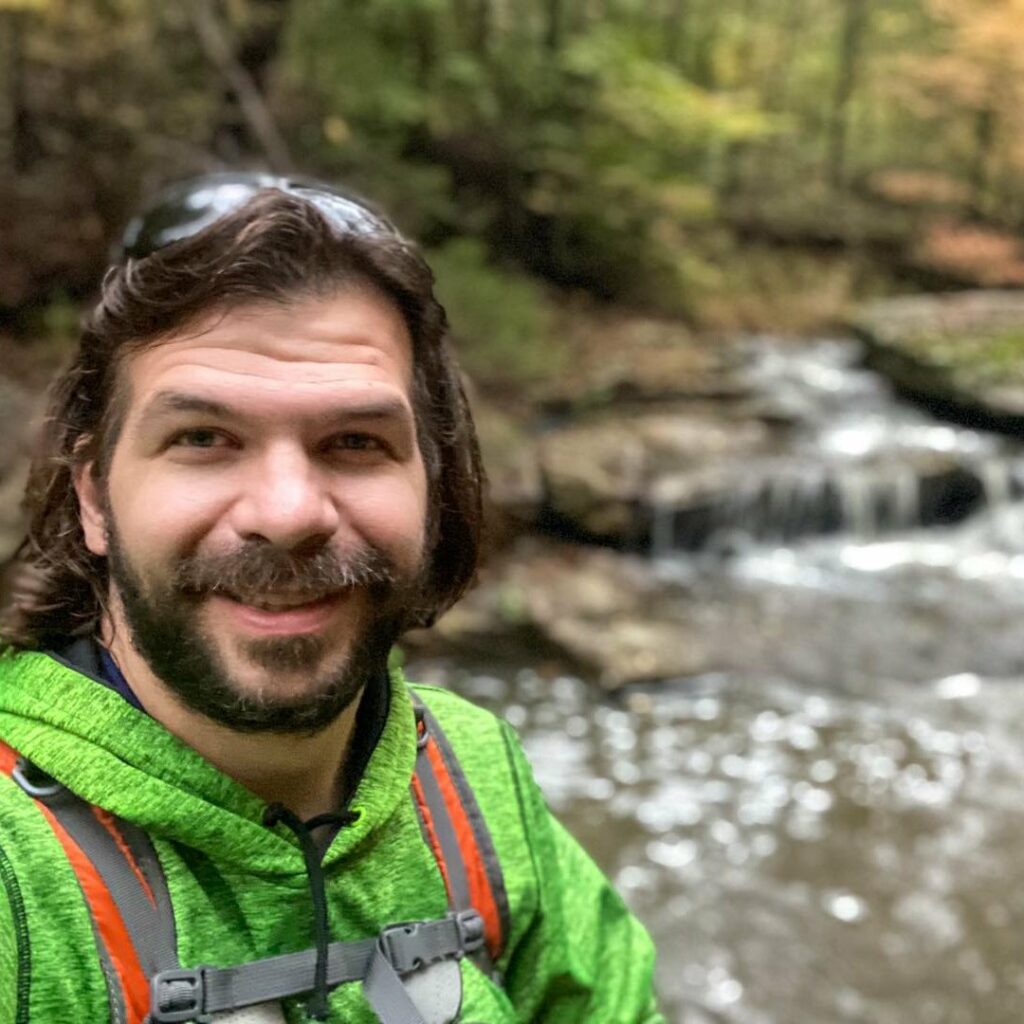
Shawn Gossman
Founder, Hiking with Shawn
Howdy folks! My name is Shawn Gossman and I founded Hiking with Shawn. I’m an avid hiker, cyclist and outdoorsman here in the Shawnee National Forest. I was born and raised in Southern Illinois and never want to leave. Click here to learn more about Shawn Gossman

